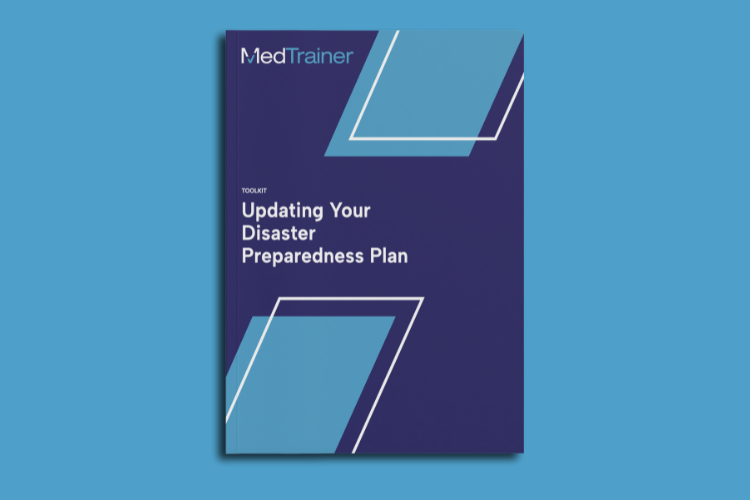The end of the federal Public Health Emergency (PHE) will reinstate regulations that have been absent for years… and many healthcare workers have never had to follow.
Hard to believe, huh? But, anyone who started in the field within the past three years has only worked under the leniencies granted through the PHE. That includes many compliance professionals.
There are plenty of compliance implications for the end of the Public Health Emergency on May 11, 2023, and an assessment is a great place to start.
It’s very likely your organization made operational decisions during the pandemic based on the leniencies afforded during the PHE. For example, in your rush to move appointments online, did you adopt telehealth technology that will no longer be compliant when all HIPAA Rules are enforced?
Although it may seem overwhelming at first, keep reminding yourself that these changes are designed to ensure the safety of patients, staff, and overall public health. You’ve got plenty of tools and training courses to utilize and this article will provide a quick checklist for changes that are common to many sectors.
4 Compliance Changes With the End of the Public Health Emergency
Hundreds of health regulations were waived or modified to make it easier for healthcare providers to care for patients amid a global pandemic. Many of those are impacted by the end of the COVID-19 Public Health Emergency (PHE). To make things even more complicated, there are other waivers that states can choose to extend. That’s a lot to keep track of! This article will focus on the federal changes, but make sure to check with all states where your providers are licensed to stay up-to-date.
1. CMS Burden Reduction Final Rule (84 FR 51732)
The Centers for Medicare & Medicaid Services (CMS) permanently extended changes made to the Burden Reduction Final Rule. Here’s an overview of the changes:
- Healthcare providers must conduct a biennial review of their emergency program (decreased from an annual review). Long term care facilities must continue to annually review their emergency program.
- Emergency plans no longer need to include documentation of efforts to contact relevant local, state, regional, tribal, and federal emergency preparedness officials regarding emergency planning efforts.
- Emergency training requirements have also loosened, decreased from annually to every two years. Nursing homes must still provide annual emergency preparedness training.
- Inpatient testing requirements are more flexible and facilities are able to choose one of the two training exercises per year. This exciting change offers more autonomy and the opportunity for facilities to tailor their testing to their unique needs.
- Outpatient testing requirements have decreased. Your facility is no longer required to undergo two testing exercises annually — only one annual exercise is required.

Get checklists, templates, and ideas to update your emergency preparedness plan.
2. Expiring CMS 1135 Waivers
In response to the unprecedented challenges of COVID-19, CMS issued 1135 blanket waivers to alleviate some of the burden on healthcare providers. Many of those will expire with the end of the Public Health Emergency. A comprehensive list is available from CMS, but here are a few expiring waivers that you may want to share with employees and ensure compliance:
- Pre-pandemic patient rights related to time frames of providing and completing medical records, patient visitation, and seclusion are being reinstated.
- Physicians and entities must immediately comply with all provisions of the Stark Law.
- All staff members must have the necessary qualifications and licensure to perform their duties, in the state in which the facility is located, and adhere to the privileged scope of care. CMS is again requiring all patients be under the care of a physician and support medical staff, such as certified registered nurse anesthetist (CRNA), to be under physician supervision.
- Emergency Medical Treatment and Labor Act (EMTALA) will again be fully enforced by CMS, so ensure your team is providing care that conforms to Medicare/Medicaid conditions.
- Medical records requirements, including content and retention, are being reinstated.
3. HIPAA Enforcement Discretion Ends
The Office of Civil Rights (OCR) published four Notifications of Enforcement Discretion in the Federal Register that will expire at the end of the Public Health Emergency. OCR is providing a 90-day transition period for healthcare providers to make the changes necessary to comply with the following HIPAA Rules before noncompliance penalties are issued. The changes relate to:
- COVID-19 community-based testing sides
- Telehealth remote communications
- Uses and disclosures of protected health information (PHI) by Business Associates for public health and health oversight activities
- Online or web-based scheduling applications for the scheduling of individual appointments
4. Vaccine Requirements End
During the pandemic, compliance teams at CMS-certified healthcare facilities were tasked with tracking the COVID-19 vaccination status of all healthcare providers. The Department of Health and Human Services (HHS) is ending the vaccination requirement, which is one less item on your compliance list! Be sure to double check your state requirements before abandoning this practice.
PHE-Related Regulations That Aren’t Changing
The Drug Enforcement Agency (DEA) and the Substance Abuse and Mental Health Services Administration (SAMHSA) collaborated to extend telemedicine flexibilities for prescribing controlled medications for six months while considering comments from the public.
Another important flexibility that will continue beyond the expiration of the PHE are the emergency use authorizations (EUAs) issued by the Food and Drug Administration (FDA). EUAs, such as over-the-counter test kits and test equipment, that were issued during the pandemic have been extended for 180 days to accommodate a period for stakeholder comments and transition.
Moving Forward
The healthcare industry is in a period of transition post-PHE and healthcare professionals continue to find themselves in a very disruptive environment. How do healthcare organizations reduce this systemic uncertainty and staff anxiety? Focus on the 3 C’s – CLEAR policies and procedures, CONSISTENT training to ensure new employee awareness, and frequent COMMUNICATION that enables staff to express their concerns.
Know that organizations like CMS, OSHA, OIG, and OCR are ramping up their efforts to ensure healthcare facilities stay up to code across various compliance standards (here’s everything you need to survive an OSHA inspection). And remember that many of your healthcare professionals are new to these changes and may need a little additional education or training.
Watch this on-demand webinar for a deep dive on post-pandemic disaster preparedness planning.
MedTrainer is here to be your partner in making healthcare compliance as efficient as healthcare organizations are critical. Learn more today.
